The CRN Test Center Looks At Four Rack Mount Servers
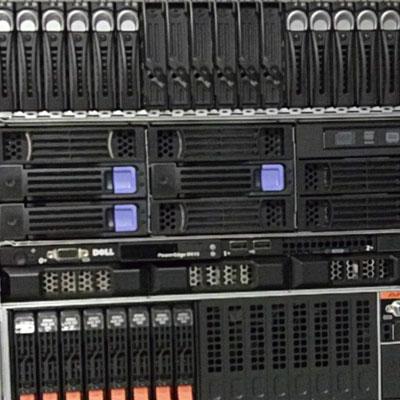
Nice Rack Mount Servers
Today's rack mount servers are like a patchwork quilt. Beyond the cosmetic, server vendors present a cornucopia of features, options and performance metrics that can rival those of building a new house.
In the age of virtualization, servers are becoming the central means for companies to save money by consolidating physical resources and employing virtual ones. Which features are best suited for server virtualization? Can that departmental print/file/server delivered last year also provide virtualization? Or is an additional,dedicated server required? How much does a great virtualization server cost?
The CRN Test Center answers these question and more through an ongoing series of reviews of recently released rack mount servers.

Acer AR380 F1: Quick In And Out
For the service provider, the key to increasing service-calls-per-day is to get in and out of each site quickly. Helping in this regard are the front-mount VGA and USB ports of the Acer AR380 F1, enabling quick access to ailing servers by technicians and their crash cart.
And with Acer, customers don't have to plunk down $10K to own a high-performing rack server. Or for that matter, even $5K. With list pricing that starts at $2,438, the AR380 F1 is a Xeon-based two-socket rack server with four Gigabit Ethernet ports plus another for out-of-band remote management and 18 memory slots that can handle as much as 192 GB.
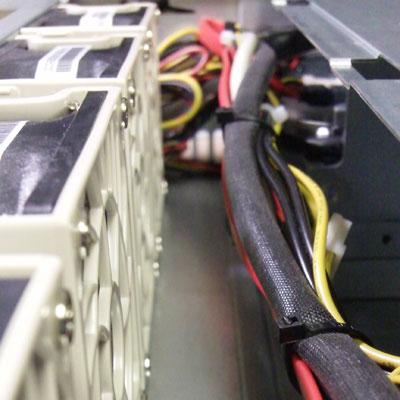
Acer AR380 F1: Roomy And Zoomy
The AR380's roomy cabinet offers ample space for as many as 16, 2.5-inch drives, which slide into a hot-swap back plane. In the tested system, two of the eight 15K SAS drives were set as a RAID 0 array and contained the operating system, which was a pre-installed copy of Microsoft Windows Server 2008 R2. Five of the remaining drives were configured as a RAID 6 array for storage; the remaining drive was designated as a global hot spare.
Handling all the RAID duties is an LSI MegaRAID SAS 9260-8i storage controller and LSI's MegaRAID Storage Manager software with battery-backed cache. Nice touch. Maximum storage for this unit is 9.6 TB of SAS drives; 12 TB with SATA. The base systems also include a pair of redundant, hot-swap 720 watt power supplies, which together consumed 189 watts during nominal activity, and peaked at 267 during benchmarks.

Acer AR380 F1: Fast And Flexible
The well-equipped machine that the CRN Test Center received for testing outperformed all but one of the fastest servers we've ever tested, yet would sell for just $3,329 on the street. The server was populated with 24 GB of DDR3 memory, a pair of Intel Xeon X5675 six-core processors running at 3.07 GHz, kept cool by two of its four hot-swap fans blowing air through a transparent duct (shown).
To its extensive list of standard equipment, flexible options, favorable price-performance ratio, Acer adds a three-year warranty on parts, the first of which includes on-site service. Taking all these things together, the company delivers what's needed for the AR380 F1 to compete in a server market that's already populated with experienced, well-established players. After seeing Acer's sturdy AR380 F1 server perform, we think it has a shot, and we have no problem adding it to the CRN Test Center's recommended list.

Dell PowerEdge R415: Two Sockets, 1U
The Dell PowerEdge R415 is a 1U rack server that can sport one or two of AMD's Opteron 4100 series processors for a total of 12 cores, 128 GB of memory and 8 TB of RAID storage. Throw in any of a score of optional host bus adapters and you're ready for high performance computing a price point that's less than $3,000.
The PowerEdge R415 is designed to be powerful to serve all the needs of the small office or department, including file and printer services, e-mail, DHCP and Web hosting. It also can be used for VDI and other small virtualization deployments. Available options and expansion capabilities such as PCI x16 slot and proprietary option slots also give it the flexibility to be used in high performance computing environments and other speciality scenarios. Front VGA and USB ports help speed up service.
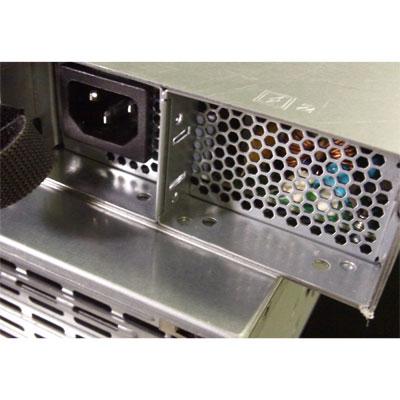
Dell PowerEdge R415: Power(ful) Options
Dell sent the CRN Test Center a mostly stock unit, with two 3.5-inch 250-GB 7200 RPM SATA drives, an optional second six-core AMD 4184 with 2.8-GHz processors and 4 GB of 1333-MHz memory. Its eight DIMM slots officially support 64 GB, but it can handle 128 GB in certain circumstances. As tested, the list price is $2,448 without an operating system; its starting price is around $800. A stock system has two Gigabit Ethernet ports, Matrox G200 video and a single 480 watt power supply with room for a redundant, hot-swap unit.
Geekbench performance was excellent. After firing up Windows Server 2008 R2 and loading Geekbench 2.1.13, the benchmark delivered a high score of 13,540, ranking the PowerEdge R415 with virtually all of the other high-end servers we've tested other than Dell's own C6145 two-node server, which set a totally new standard in performance.

Dell PowerEdge R415: Tight Quarters
Drives and all other internal components are accessed by sliding the top cover off rearward. Inside, things are somewhat tight. Memory and processors are shrouded for maximum air flow. With the cover in place, the unit is completely quiet. And at just under 23 pounds, the R415 is quite light and easy to handle, install and maintain. In addition to all major versions of Windows Server, the PowerEdge R415 also is certified to run (and come pre-installed with) Novell SUSE Enterprise Server, Red Hat Enterprise Linux and hypervisors from Citrix and VMware (with the addition of a few options).
For the small business or department on a budget, the Dell PowerEdge R415 would make an excellent choice and is recommended by the CRN Test Center. All hardware is covered by a three-year warranty.
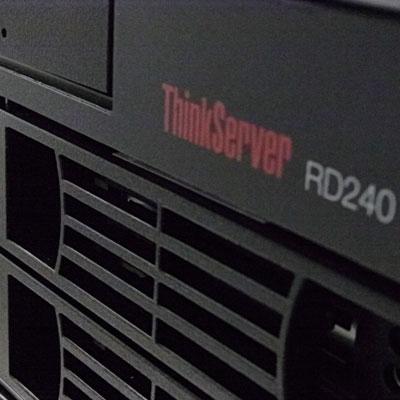
Think Lenovo, ThinkServer
Lenovo's ThinkServer RD240 is a 2U, two-socket server that can run Linux, VMware or Windows Server with as much as 64 GB of ECC memory on Intel Xeon E5500 and E, X and L 5600 processors.
The CRN Test Center tested a ThinkServer RD240 with a pair of quad-core Xeon E5640 processors running at 2.7 Ghz and loaded with 16 GB of 1333 Mhz DDR3 memory. We'd characterize the unit's Geekbench scores as above average, and its IOmeter performance as exceptional. With Windows Server 2008 R2 running on 16 GB of 1333 Mhz memory, the RD240 delivered a Geekbench 2.1.13 high score of 12,409, which puts it squarely among the leaders in tests we've performed here at CRN. At its peak, the RD240 was able to sustain more than 71,600 I/O transactions per second (IOPS) and a sustained a transfer rate of 280 MBps, making it well suited for small-office scenarios such as for file and print services, e-mail, media streaming, virtualization and other office duties.
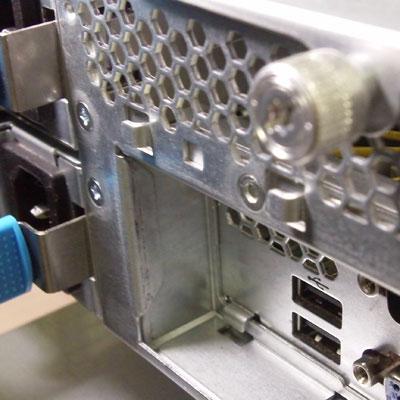
Lenovo ThinkServer RD240: Thumb-Screwed Again
This capable little box is more than up to the role of virtualization server for small organizations, and its thumbscrews make it exceptionally easy to service. A single captive thumbscrew is all that holds the top cover in place, and once removed reveals a flip-up cooling shroud that streams air across its two large heat sinks and eight DIMM slots. Built around a Tyan Tank B7002LNV motherboard, the system can handle as many as 12 processor cores and 64 GB of ECC memory.
The system's three PCI Express x8 slots are delivered via a riser card, easily accessed thanks to a clever design, and more thumbscrews. Option cards can be installed and affixed to the assembly in the comfort of anywhere that's not the server room and then re-installed into the server. Average power consumption (of its dual, redundant power supplies) was about 246 watts when highly active; 138 watts when mostly idle and 26 watts when powered down.

Lenovo ThinkServer RD240: Knuckle Room
An optional LSI MegaRAID SAS 8708ELP card controlled the system's three 500-GB SATA drives as a single 1.5-TB RAID 0 array (its cables are shown). That board offers battery-backed up cache, and is capable of RAID 0/1/5/6/50 and 60; while the on-board RAID controller logic is limited to RAID 0/1 and 1E. There's room for a total of eight 3.5-inch hard SAS or SATA drives with a maximum supported storage capacity of 16TB.
For a street price starting at around $900 with a one-year on-site warranty, the ThinkServer RD240 comes standard with dual Gigabit Ethernet, DVD-RW drive, six external USB 2.0 ports, serial and VGA ports and a 750 watt power supply (plus an optional second hot-swap unit). OS options: Linux, VMware and Windows Server. Processor options include numerous Xeon E5500 and E, X and L 5600 models. For the small office with a small budget, the Lenovo ThinkServer RD240 an excellent choice for its solid performance, expandability and ease of service. It's a recommended product by the CRN Test Center.
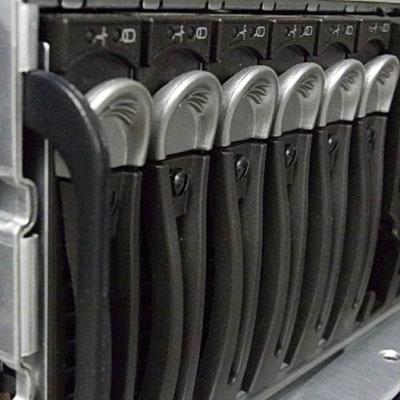
Dell PowerEdge C6145: Server Density Squared
Dell (NSDQ:Dell) has really outdone itself. With the Dell PowerEdge C6145, the company offers a machine that the CRN Test Center can describes as our 2010 Server of the Year squared. Its capacities surpass last year's density-leading R815 PowerEdge, and just one of the C6145's two server nodes nearly doubled the Geekbench score of the reigning champ, the Dell R810.
The C6145 is two 4-socket servers in one 2U chassis, each with 32 DIMM slots for a total DDR3 memory capacity of 1TB and 96 total processor cores. It's aimed squarely at HPC applications, virtualization, VDI and EDA workloads, and with a peak Geekbench 2.1.11 score of 22,607, we'd say it's well qualified. For our tests, we configured each node as a stand-alone server running 64-bit Windows Server 2008 R2.
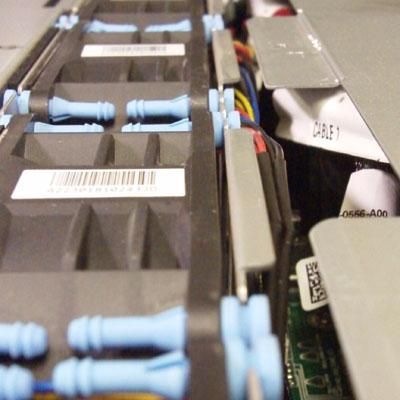
Dell PowerEdge C6145: Performance Testing
Each server was populated with four AMD (NYSE:AMD) 6132HE 12-core processors, and each with its own 128 GB of memory. However, Windows addressed only a maximum of 32 GB. The peak results were observed when running the 64-bit version of Geekbench on node 2. Node 1's high water mark was 21,257.
The C6145's front panel is occupied by drives -- as many as 24 2.5-inch drives or 12 3.5-inch drives. Its top cover slides backward to reveal processors, fans (shown), memory and its three half-length PCIe x16 expansion slots.
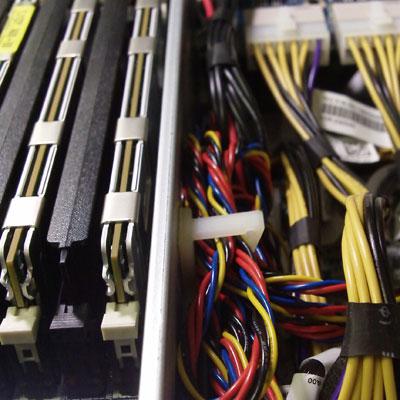
Dell PowerEdge C6145: Might Makes Tight
As one might expect from a server so dense, components are packed in quite tightly. However, Dell does a good job of routing and bundling cables and arranging components logically. All rear-facing components are hot-swappable, including the twin 1023W power supplies and upper and lower server nodes, each of which slides out in its 1U sled for upgrades and service. Ports built into the motherboards include dual Gigabit Ethernet, dual USB 2.0 and VGA output. A third RJ-45 connector is dedicated to out-of-band management and administration.
For a machine intended for virtualization, we would've liked to see more than two networking interfaces per server node. There's one spot that Dell may have fallen a bit short. But its ample expansion capability -- five PCI slots per server in all -- more than make up for this shortcoming. The CRN Test Center recommends the PowerEdge C6145 for any installation in need of a high-density, high-performance server with plenty of redundancy features. The C6145 as tested here carries a list price of $19,502.

Dell PowerEdge C6145: Sled Connector
Each of the C6145's two server nodes attaches to the chassis storage backplane and power supplies through this pair of connectors mounted just behind the system fans. It's not immediately obvious that the fans and power supplies are shared by both server-node motherboards, which are mounted to sleds that slide out rearward. This ingenious design enabled more efficient use of storage arrays across both server nodes, as well as larger, longer-lasting and more efficient fans for cooling all internal components. Beware when installing this beast: it weighs as much as 80 pounds or more without mounting rails.
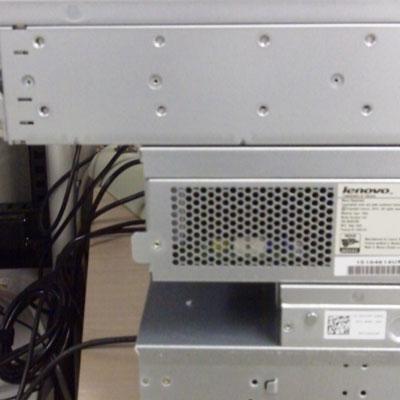
Packing The Racks
It seems safe to predict that the data center will continue to consolidate, and that the use of virtualization will rise until it finds its natural level. Racks will continue to be packed, and servers that occupy those racks will become ever more dense.
The good news for resellers will be that in addition to hardware, this current wave will present revenue opportunities for installation and maintenance of servers and storage, and for data backup and replication, as well as for disaster planning and recovery. The savvy reseller will be there at every step with solutions for every need.